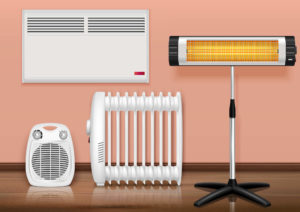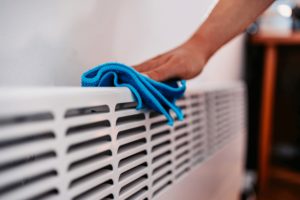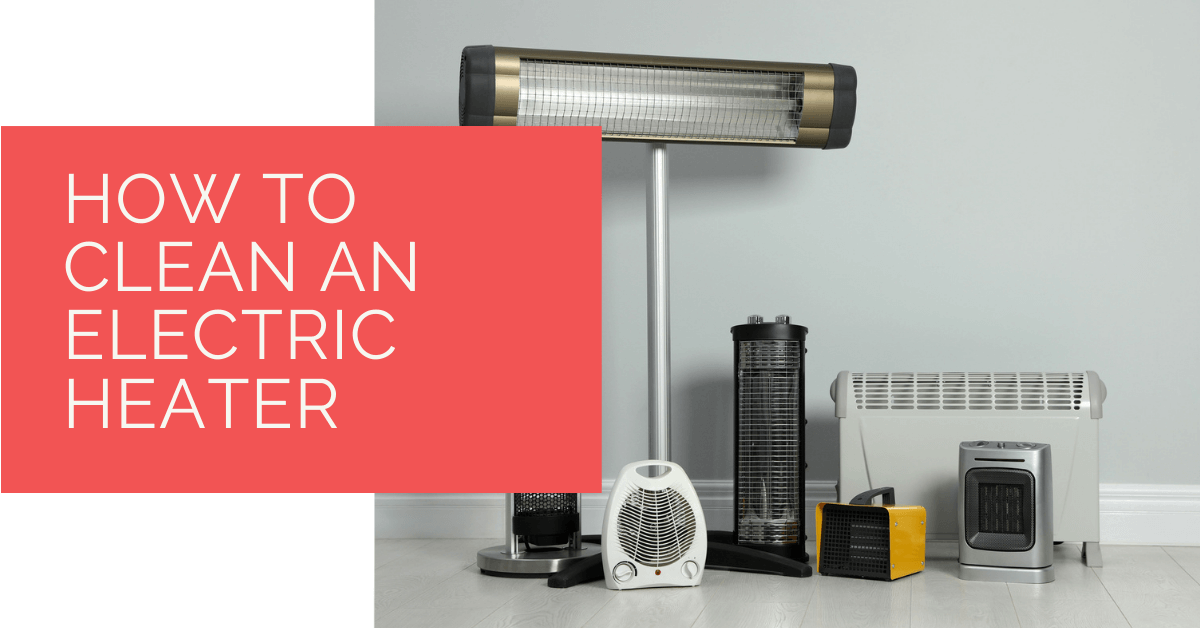Home appliances can easily acquire dust and debris inside the units. This can sometimes affect the heating performance of devices, emit unpleasant odours, and other damages to the machines.
Electric heaters are one such kind of home appliance that can easily absorb dirt and hence requires regular cleaning for effective functioning.
To do so, there are multiple ways you can go about it for uninterrupted performance. In most cases, it is possible to clean the electric heater by yourself at home. On instances when you can’t, you can always reach out to professional services if you notice greater damage.
This step-by-step guide will help you understand how to effectively clean your electric heater.
Contents
Key Takeaways
- Regularly cleaning electric heaters is crucial for maintaining efficiency and preventing performance issues, unpleasant odours, and damage.
- There are different types of electric heaters, including baseboard heaters, built-in wall heaters, and toe-kick heaters, each suitable for specific room sizes and configurations.
- A step-by-step process for cleaning electric heaters involves turning off the unit, removing and cleaning the grill, blowing out dust and dirt, and reinstalling the grill to ensure smooth operation.
What Are the Different Types of Electric Heaters?
Electric heaters are excellent home appliances that provide quick heating solutions. They are inexpensive, easily installed, and don’t affect air quality.
However, they can cost a lot in terms of electricity consumption. They also can’t be used for whole-house heating but can be installed only in rooms or spaces that don’t get enough heat from a central heating system.
If you too are looking forward to installing an electric heater inside your home, then you can consider choosing from the different types of electric heaters listed below. You can choose the right one based on your requirements, like budget, usage, performance, etc.
Electric Baseboard Heaters
Electric baseboard heaters are permanently installed in and hardwired inside for houses that heavily rely on electricity for heat. They work by drawing cold air from the outside. This helps create a convection current that helps in warming up the room.
These units are installed beneath windows to counter heat loss through the glass and are generally controlled by a thermostat, which is usually mounted on the front of the heater.
Built-In Wall Heaters
Built-in wall heaters are an excellent choice for small and compact rooms, especially bathrooms. These electric heaters are usually convection-style heaters with a motorized fan inside them and are installed in the cavity between two wall studs.
Generally, these units are self-contained and have built-in thermostats. It is not advisable to install them on exterior walls since exterior insulation can cause condensation problems.
One of the drawbacks of a wall-heater that you should also note is that they tend to make noise.
Toe Kick Heaters
Kick space heaters or toe-kick heaters are designed for rooms with space constraints. They are installed between the floor and the bottom of cabinet doors with toe kicks.
They are rectangular-shaped boxes and are usually convection-styled. They work by drawing cold air from the outside and circulating it past an electric and heating coil. Thereafter, the heated air is expelled through a grid incorporated into the toe-kick.
Once the grid is heated up, it is primarily felt at the floor level but gradually rises to other room parts.

Step-By-Step Process to Clean an Electric Heater
Electric heaters are easily prone to acquiring outside dirt and dust. They need to be regularly cleaned to ensure the efficient and effective functioning of these units.
It is therefore recommended that you clean your electric heaters twice a year. If you live with pets or in places with excessive dirt or dust, you might require frequent cleaning on these appliances.
Here are some essential steps you can follow to keep your electric heaters clean.
Step 1: Turn Off the Unit
The first and most important step to cleaning your electric heater is to first turn off the unit. In addition to this, you’ll also need to turn off the breaker connected to the heater.
This is important for safety reasons and to prevent any accidental damages.
Step 2: Remove the Grill
Once you’ve turned off the unit, the next step is to remove the unit’s grill. If you have a thermostat on your heater, make sure to remove the knob carefully. This can take up some time.
If you try to remove the knob too quickly, it can further damage the thermostat. You should avoid this for if you end up damaging your thermostat, you will need to get it replaced or buy a new heater altogether.
Once you’ve removed the knob, it’s time to now remove the grill and place it in a tub full of soap water. This will remove and clean any dirt and dust accumulated in the grill.
Step 3: Blow out The Heater
You need to follow precautions while following this step. Make sure that the blades are not spinning around as this can cause damage to the motor. So, very carefully blow the dust and dirt from inside the heater using an air compressor, a vacuum, or a hairdryer.
Step 4: Clean the Grill
After placing the grill in a tub full of soap water, you can scrub it to remove any excess dirt that may be difficult to remove. Give it a good rinse to ensure that it’s cleaned thoroughly.
Make sure that the water doesn’t drip down the unit. Thereafter, you must wipe it and blow dry if need be.
Step 5: Reinstall the Grill
Once the grill is cleaned and dried up, you can carefully reinstall it along with the thermostat knob. This step doesn’t require much time and can be done quickly.
Once you’ve reinstalled the grill, your unit can now be turned on.

Heat Pump Source: Reliable Heating and Cooling Solutions
At Heat Pump Source, we take pride in our unwavering commitment to serving the UK with top-tier HVAC solutions. From the efficiency of heat pumps and the cool relief of air conditioning to the warmth of boilers, radiators, and underfloor heating, our dedicated team is always at the forefront of innovation. We understand the unique needs of every household and business, and we strive to provide dependable health and cooling products and services that are tailored just for you. Ensuring your comfort and satisfaction is our utmost priority. Whether you have questions, need guidance, or require support, we’re always here to assist. Please don’t hesitate to contact us; we’re eager to be of service.
Conclusion
Electric heaters are great appliances that provide the necessary heat to rooms and spaces without enough heat. They are an excellent investment if you’re living in cold areas. However, keeping these units clean is essential as it can adversely affect their performances and cause you more money to get them repaired.
The steps mentioned above should help you clean your units effectively and ensure smooth functioning.
About the Author
At Heat Pump Source, our articles are the product of a collaborative effort among a team of highly skilled HVAC experts. Our dedicated professionals, hailing from diverse backgrounds in heating, ventilation, air conditioning, and refrigeration, contribute their extensive knowledge and experience to every piece of content. This multidisciplinary approach ensures comprehensive coverage. Our commitment is to deliver authoritative, reliable, and tailored advice to meet the unique needs of every household and business across the UK.

